I Went Dumpster Diving At Your Favorite Restaurants & Uncovered A Disturbing Truth
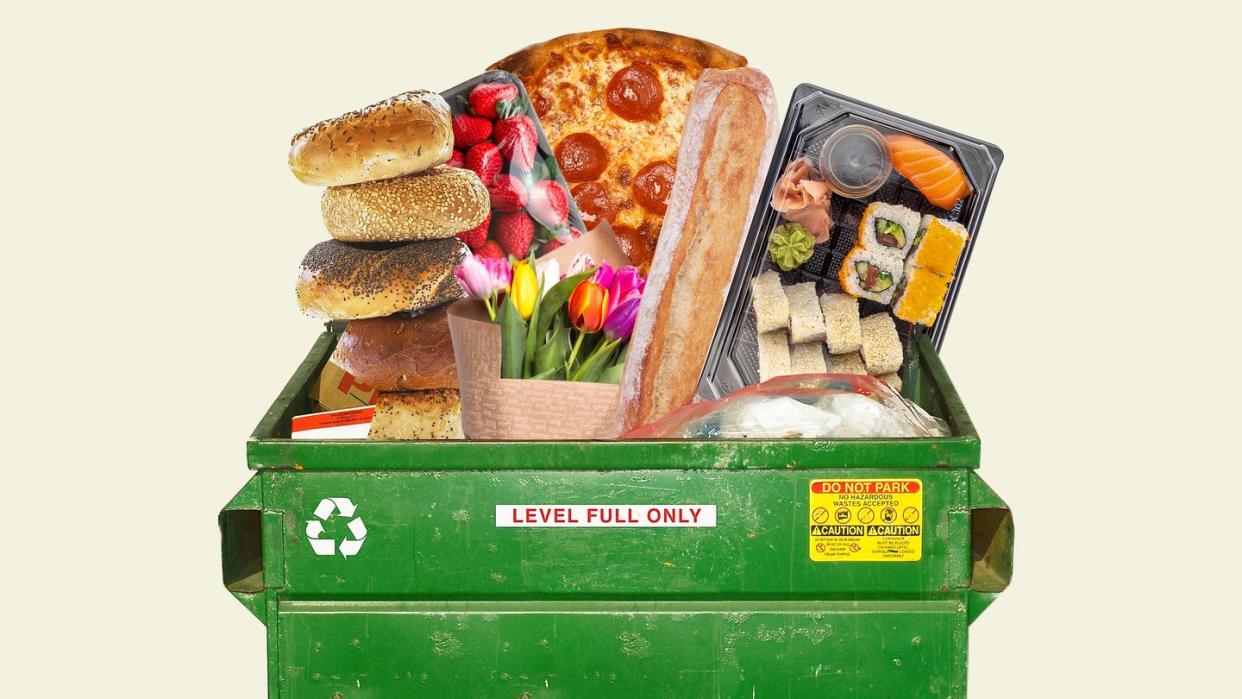
On a recent summer evening, I found myself on the Upper West Side of Manhattan digging through the trash. My younger self, always afraid of germs, would have never imagined that her future self would be picking through garbage on the curb, but there I was.
“You could add this to a salad,” said Anna Sacks, known online as @thetrashwalker, as she picked up a pile of herbs she found in a trash bag. Sacks is a former investment banker who has amassed a large following for documenting her “trash walks,” during which she dumpster dives and discusses food waste.
We were outside Citarella Gourmet Market, our first stop of the night. We’d picked through trash bags and found boxes of nice pastries, bouquets of flowers, a sun-dried tomato spread, and containers of sushi that were one day past their expiration date.
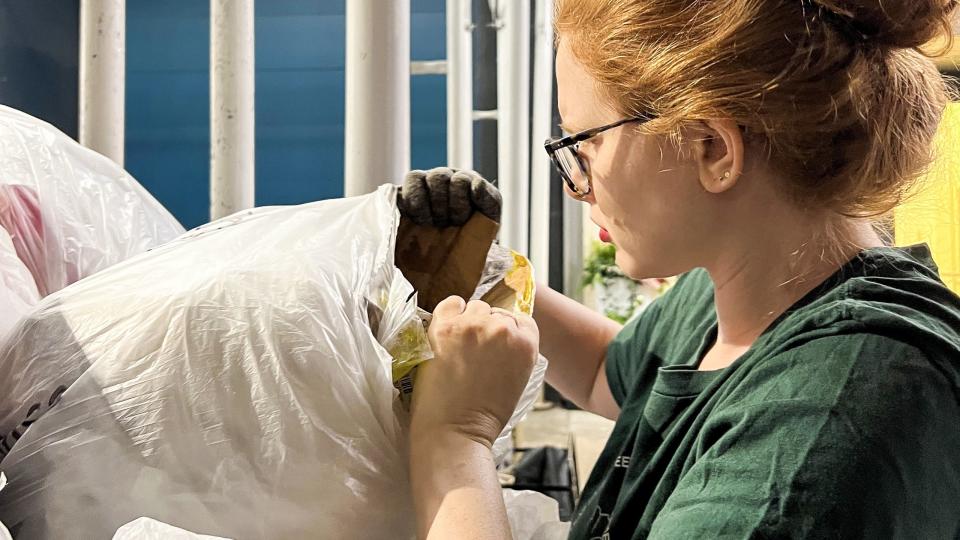
Sacks has developed the ability to determine what food items are by feeling them in the bag before untying it (she never rips them open). She’s never gotten sick from eating anything she’s pulled from the garbage. But like many of us, she has gotten food poisoning from eating at restaurants. And if she finds items in the trash that are past their date? She uses her senses and trusts her gut.
"A good rule is for you to go an hour after closing time," Sacks said, adding that there's usually an hour of cleanup before garbage bags get put on the curb.
The next stop was Le Pain Quotidien, where we found a variety of baked goods and full loaves of bread, perfect for pairing with that sun-dried tomato spread. Outside of a Juice Press, Sacks recognized another dumpster diver, a lifelong New Yorker who had just turned 77. We talked about our finds from the night and exchanged some of our items.
“I'm not poor, but I also think if there's food out on the street, why shouldn't I take some and give it away?” he said.
Toward the end of the trash walk, we ended up at Dunkin.’ The store was still open, but outside there were already a few trash bags full of donuts. When you think about all of the Dunkin’ locations in Manhattan (over 160), let alone the country (about 9,434), that’s a lot of donuts being thrown out every night. If we were to underestimate it and say a store only tosses two dozen donuts a night, that’s potentially 226,416 donuts going in the trash every day in the U.S. from Dunkin’ alone.
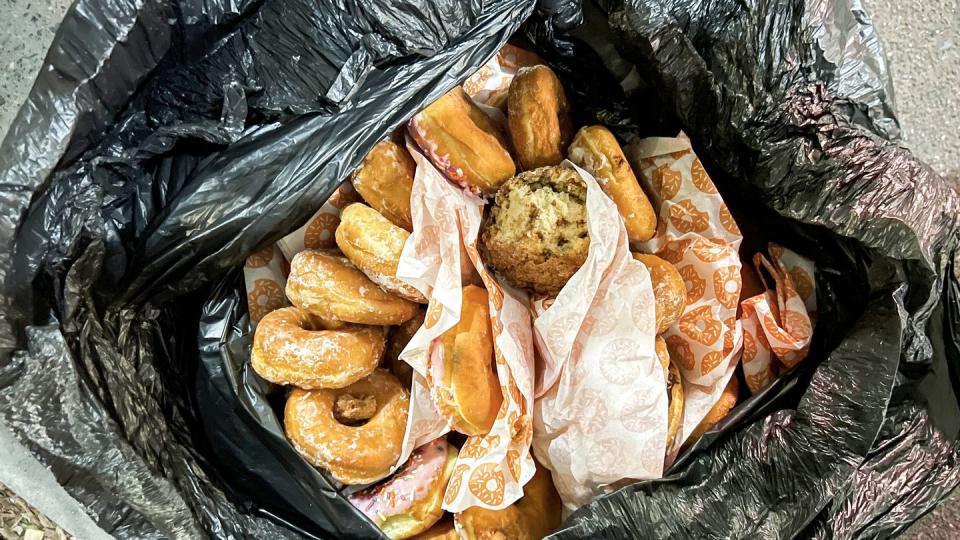
Why Is There So Much Food Waste?
In a country where nearly 34 million people live in food-insecure households, it’s shocking that about 40 percent of the food supply ends up in the trash. There are plenty of reasons why so much food gets tossed. In homes around the country, old items rot in the back of the fridge or pantry. At grocery stores, packaged items sit on shelves and get pitched when they approach their expiration date; some produce isn’t deemed pretty enough to sell; and Valentine’s Day chocolate has to make way for Easter candy.
A 2017 study revealed that about a third of New York City's residential trash is made up of compostable organics, and 21 percent is food scraps. While recent legislation will eventually require all city residents to compost, living waste-free doesn't come naturally or easily in our society. Not everyone knows how to use vegetable trimmings, or that most products can still be eaten after their expiration dates. Day to day, the average person doesn't think about how they're contributing to the 103.7 million metric tons of carbon dioxide equivalent of methane being produced from solid waste landfills, which was 14.3 percent of total U.S. methane emissions in 2021, according to the EPA. The EPA also notes that these were enough greenhouse gas emissions to run approximately 23.1 million gas-powered passenger vehicles for one year.
Annette Nielsen, Executive Director of the Hunter College New York City Food Policy Center, has worked in various sectors of the food industry, from production on farms to policy on Capitol Hill. When it comes to tackling food waste, she said processes need to be easy for people, and that there has to be an education component behind them. For example, when Nielsen teaches, she always includes a lesson on how to use vegetable trimmings to make stock.
“You have to have either the knowledge, the will or, most importantly, the time to be able to think ahead in that way, or to use products in that manner,” she said. “Unless you’re living and breathing this work all the time, you’re not really aware, perhaps, of the fact that, yeah, a box of pasta probably is okay past the ‘best buy’ date.”
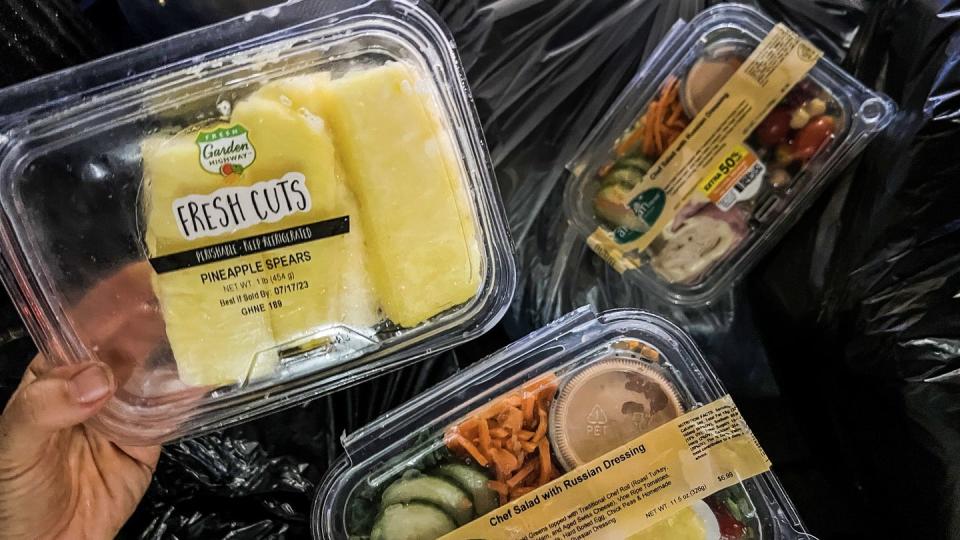
When it comes to expiration-date labels on food, there are no federal regulations requiring products to be dated, except for infant formula. Voluntarily placed by manufacturers, these dates aren’t an indicator of safety, and the products are probably still safe if they aren’t showing signs of spoilage, according to the USDA's Food Safety and Inspection Service (FSIS). There are also no uniform descriptions for these labels in the U.S., which is why you’ll find a range of date-labeling phrases from “sell-by” to “use-by.” To minimize confusion and food waste, the FSIS recommends that brands use a “best if used by” date. Nielsen said the White House Conference on Hunger, Nutrition, and Health has been looking into how the country labels food, and she's hopeful that the confusion will be addressed.
Rescuing Food Waste From Retailers
In an effort toward zero-waste goals, many New York City grocery stores and restaurants are required to separate organic waste from trash and recyclables for composting. But considering all of the packaged meats and sandwiches in plastic deli containers I saw in the trash, a lot of food waste is still headed to the landfill.
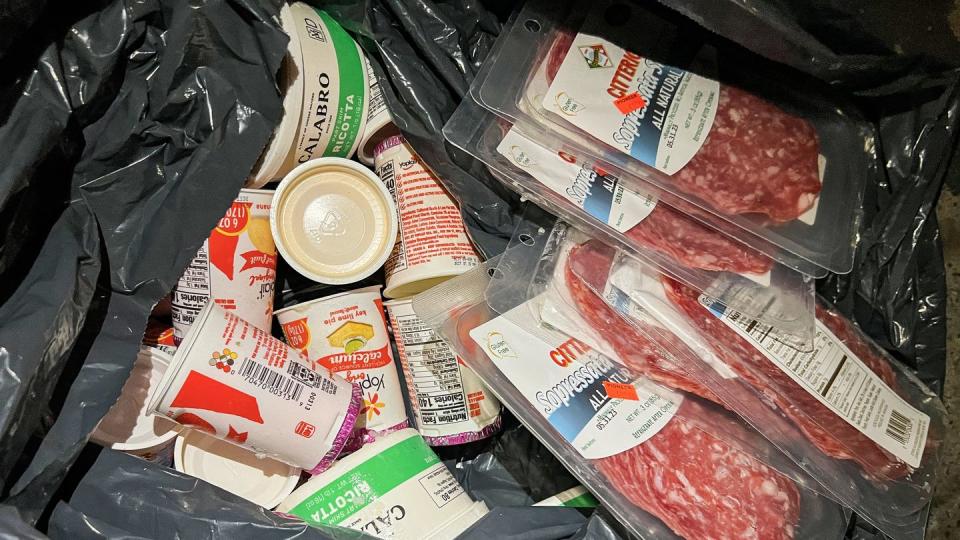
Separating waste requires time and money, and whether these businesses are receiving violations is unclear. Meanwhile, the nonprofit City Harvest will pick up unused food for free, providing cost savings to businesses that would otherwise have to pay for carters or haul organic waste themselves.
Instead of being tossed, so much edible food can be put to better use feeding the 1.2 million New Yorkers who are food insecure. And, contrary to popular belief, many donation centers will accept food that is past its date. A law called the Bill Emerson Good Samaritan Food Donation Act protects donors from liability as long as the food is donated in good faith.
By the end of this year, City Harvest will rescue and deliver more than 77 million pounds of food; 28 million pounds will come from New York City alone. While these seem like high numbers, there are still enormous quantities of perfectly edible food being put out on the curb every night. And the problem starts with excess food production.
“There are so many ways to reduce [food waste] at the supplier level,” said Jenna Harris, associate director of donor relations and supply chain at City Harvest. “We clearly are just producing too much food in this country…all over the world, really.”
“At a certain point, even if we are donating all of this food, we’re just going to be moving around food waste because the amount of calories that we produce is too much for the population that we have,” said Sacks.
In other words, there are only so many donuts we can eat.
Freegan For Life
A loose community of people called freegans are adamantly opposed to this type of excess. Former high school teacher Janet Kalish is an organizer of the New York City freegan group Freegan.info. “When you ask what is a freegan, it’s sort of self-defined,” she said, noting that there are no requirements or rules to be part of the group. Freegans avoid participation in the traditional economy and consumerism as much as they can, which often means they dumpster dive.
“It's all encompassing,” Kalish said. “It's not just about food. It's about transportation and clothing, and entertainment and housewares, and just living in a way that's in better harmony with our planet and with each other.”
Kalish buys very little other than the occasional meal out to socialize. Instead of walking through the aisles of a grocery store, she looks through the trash bags on the curb. “It’s just a lovely atmosphere, a supermarket in America,” said Kalish. “And that standard of perfection means that a lot of things get thrown out just for the aesthetics of the store.”
I met up with Kalish and another member of Freegan.info one night on Manhattan’s Upper East Side. Although it was only my second time dumpster diving, I had gotten used to the looks from passersby. Coupled with my usual anxiety, there was only excitement—what would we find today?
We scored a pretty impressive haul. Outside a grocery store we found an assortment of produce. A trash bag in front of Duane Read was full of packaged snacks. There was a bounty of vegan cookies at Juice Press—all we had to do was wipe stray chocolate off the bags.
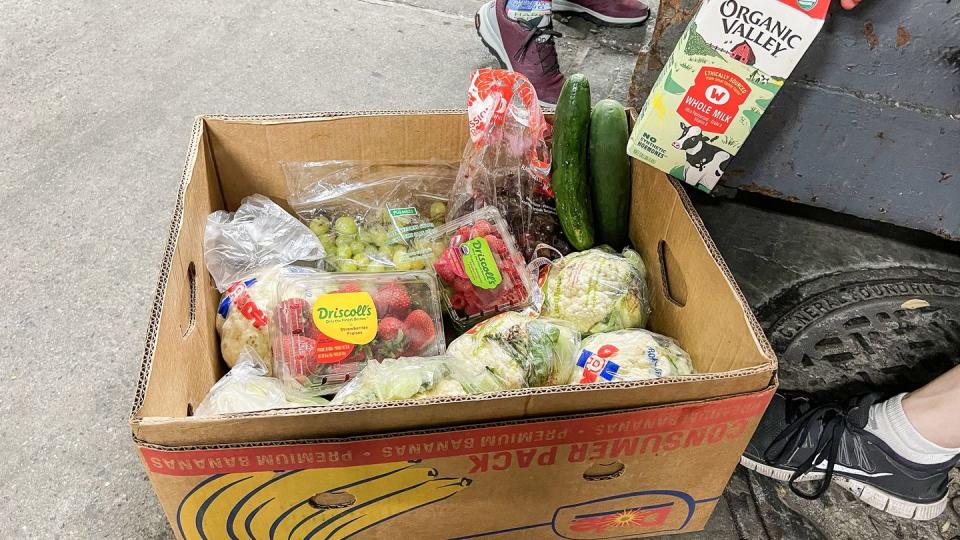
While there are freegans all over the world, Kalish said the New York group is the most famous one. This is primarily because most of the city's trash is accessible, unlike other places where it’s often locked in dumpsters or hidden behind gates.
Fighting Stigma With A Better System
We grew up learning about the three Rs: reduce, reuse, recycle. They were a set of valiant, self-assuring things that we could do to help save the planet. Just like repurposing an old table found on the sidewalk or rummaging through used clothes at a thrift store, what makes looking through a dumpster to rescue food any less heroic? I can assure you, no bed bugs were on the baked goods at Citarella, unlike some thrifted couches out there.
Before I met Sacks, I went to my local hardware store to buy puncture-proof gloves, as she instructed. When the store clerk asked me what I needed them for, I said I was going dumpster diving—but that I'm journalist doing it for a story. My friends already know what I do for a living, and there was no need to justify it when I told them. In fact, many of them know people who dumpster dive, and some even admitted to salvaging sandwiches or baked goods from the trash in college when money was tight. But there are various motivations for dumpster diving. Most freegans in the group don’t do it for financial reasons, according to a member I spoke with. It's more activism than anything else.
Sacks has been called gross for dumpster diving. Kalish has been called sick or obsessive behind her back.
“It’s not just the ick element of getting food from the trash, but also the stigma and the idea that somebody else might see that you’re bending down and looking at trash,” said Kalish. This is why many people might be more inclined to go on a trash tour in a group. “It's almost a festive party atmosphere, rather than a shameful, embarrassing, shy experience.”
“The goal is for everything to be eaten that’s edible,” Sacks said. “Ideally it would be done in a way that’s systematic, more dignified, more hygienic.”
When I think about my weekly grocery list, I realize that I’ve seen many of those same items in trash bags on the curb, still perfectly edible. The strawberries might not be organic, and the almond milk could be a brand I’m not used to. And I might not find the green onions or ginger I always have on hand, but I could push myself to think beyond my familiar wish list.
Just like I alter my weekly meals to fit what’s on sale and shop based on what’s in season, perhaps checking what’s in the trash isn’t much different. Instead of stopping by the store on the way home to grab a Japanese sweet potato for dinner, I could peruse the bags lining the curb for ingredients. This doesn’t come naturally in a country of choice and abundance. I’ve also always had the luxury of knowing when my next meal would be. Perhaps we’d produce less waste if we stepped outside what’s comfortable or “normal," whether that means dumpster diving, composting, or simply being more conscientious.
In a perfect world, Kalish said there wouldn’t even be a need for freeganism.
“We're a little bit ironic in some ways, because as much as we hate this capitalist system, there is some irony that we can sustain ourselves on the waste of it,” Kalish said. “But we're not looking to live free as just a way to get away with something. It's more that we're looking to make a better system that isn't so full of waste, almost to put ourselves out of business.”
You Might Also Like

